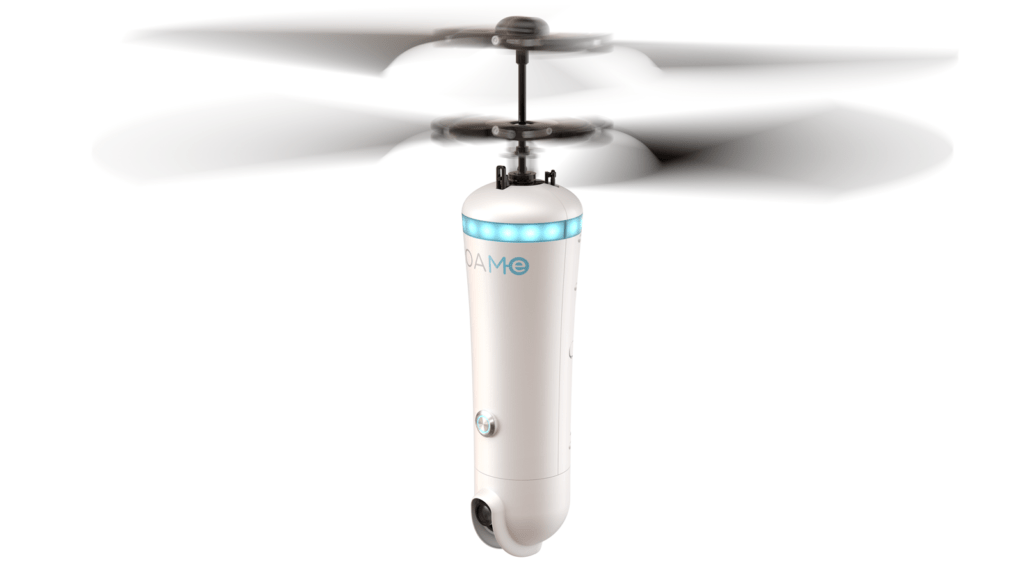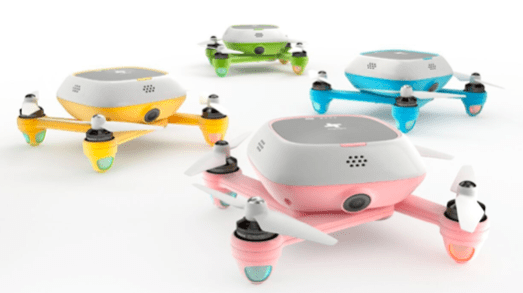For a long time, the consumer drone industry was a complicated world restricted to skilled pilots and super-keen aerial photographers. But as the idea of a flying camera becomes more and more mainstream, the market is taking a turn and appealing to a wider range of people than ever before. A great example is the ‘Selfie’ drone trend beginning to take off. In the past few years, pilots have been amazed at the quality footage they could get of landscapes and cities – now there’s a whole sector developing catered to building drones that operate on a much smaller scale, as personal paparazzi.
Selfie drones are the result of three different trends across technology. The first is in terms of drone software and hardware. Autonomous flight and tracking functions are becoming ever more sophisticated industry norms. Generally the better we get at engineering something, the smaller newer models become – Just think back to how clunky mobile phones and laptops used to be. With that tech logic in mind, smaller, smarter drones have laid the foundations for the soon-to-be Selfie drone boom.
To understand the two other trends driving these flying vanity projects, you have to look closer at why people find them appealing and how they are used. Most people take selfies to create a memory, which can then be uploaded onto social media sites built around the premise of showing off the best, most positive aspects of our day to day lives. Inevitably, people want to take these pictures when they’re on the go and doing something interesting. Selfie sticks, or Narcissiststicks, quickly began to gain a pretty bad reputation – so why not avoid that altogether and boost your footage quality at the same time?
Top Selfie Drones – The Contenders
So that’s enough talking down about the concept of a drone that follows you around explicitly to take your picture on demand. Let’s take a look at the contenders in this space, and consider who might be in pole position to dominate what could be a lucrative market sector…
The Hover Drone
Back in April, the team at Zero Zero Robotics caused a stir with the launch of the Hover Camera. As we noted at the time, it’s refreshing for a new drone’s name to be so self-explanatory. This little gadget doesn’t look like anything else on the market, but it’s simple appearance masks the impressive technology on the inside.
4K video, face and body tracking, image stabilization, the ability to hover straight out of your hand or be thrown into the air, 360-degree panoramics and a sonar-based self-positioning system – this is an exciting drone, whatever you think of its applications.
The team at Zero Zero Robotics expects to ship in time for this holiday season, at a price under $600.
Verdict: It’s hard not to be impressed by the tech packed into the Hover Camera and the subtlety with which it operates. So out of all the selfie drones, we think this is the one that will most appeal to current pilots looking for another gadget. But the Hover Camera’s biggest challenge will be appealing to those who simply see a selfie drone as an accessory. It seems as though buyers in this sector won’t be overly keen on paying a reported $600, especially when competitors offer similar capabilities for half the price.
Dobby
Any drone named after an endearing Harry Potter character ahs got to be worth trying, right?
The Dobby drone comes from Chinese manufacturer ZeroTech. Similar to the Hover Camera, Dobby is designed to be super-portable. It’s four rotors fold inwards when it’s not in use, so you can slip it easily into a bag or pocket. In terms of specifications, the Dobby has more in common with the Hover Camera. It can hover in place to record video in 1080p from a 13-megapixel camera. It can also take 4K-resolution still photos and has a burst mode.
Through the Dobby app pilots can upload footage and images straight onto social media sites.
Dobby has 9 minutes of glorious, selfie-taking flight time, and you can order one today from Alibaba’s Taobao for about $300.
Verdict: Dobby has just landed in Europe, so perhaps it won’t be too long before we see it cross the Atlantic and make its way to the US. In terms of portability – probably something you want for any selfie drone, right? – the Dobby is ahead of the rest. Foldable rotors are a great addition for anyone who wants to have a flying camera on their person without really being conscious of it being there. Price-wise, it looks set to undercut the Hover Camera by a big margin. Things are looking good for the Dobby.
ROAM-e
When Australian tech company The IoT Group announced the Roam-e, we may or may not have suggested that it was an April Fools. To be fair, the launch occurred on April 1st, and the concept was more than a little bizarre. We’ve since discovered that it’s 100% genuine.

The company has packed a lot of capability into what it insists isn’t a drone but a ‘flying selfie stick‘. That distinction could well be important as regulations on recreational flying continue to be adopted around the world. Whatever you think it should be defined as, $399 for a camera with 20 minutes of flight time, a 1080p camera, and software features including facial recognition ‘follow me’ and something akin to obstacle avoidance…. well that’s not a bad deal, is it?
After raking in the pre-orders, the IoT Group has placed the first production order for the ROAM-e flying selfie camera with Chinese supplier Shenzhen AEE Technology – delivery is expected in December 2016 .
Verdict: Well it’s certainly different. We’re still not sure if this is classified as a drone, but if you’re looking for value-for-money selfies, look no further. Whether the ROAM-e lives us to its 20 minutes of flight time will go a long way toward establishing it as a major contender in the field. With deliveries expected in December, it won’t be too long before we find out.
Kimon
Chinese manufacturer Keyshare introduced the Kimon selfie drone to cater to selfie lovers priced out of using a drone by the likes of the more heavy-duty AirDog and Hexo+. And quite rightly so – most people don’t require an extreme sports drone to capture them buying groceries or walking the dog.
So what does the Kimon offer? Well, 4K video for starters. And, as with all of our selfie drones, the Kimon doesn’t require in-flight control. You just need to select a flight mode from your smartphone to initiate take-off, hovering, returning to home and landing. The Kimon doesn’t just take selfies either, it offers a selection of selfie-taking modes (360-degree panorama, 45-degree shot, follow shot, panoramic selfie and standard selfie) to help you take in as much of the surrounding environment as you want.

The Kimon comes in six different colours – something which further differentiates it, and this type of drone in general, from the rest of the market. But at $447, you’re paying for more than a photography accessory.
Verdict: It’s available right now, which is a bonus. But the Kimon is at the upper end of the selfie drone price spectrum, so you might want to wait until the impressive, and slightly less conspicuous Hover Camera is released. That’s if you’re looking to spend big in the first place. If not, the Dobby might be a cheaper, more portable option.
Malek Murison is a freelance writer and editor with a passion for tech trends and innovation. He handles product reviews, major releases and keeps an eye on the enthusiast market for DroneLife.
Email Malek
Twitter:@malekmurison
Subscribe to DroneLife here.







[…] Read more: Unmanned Aerial Vanity: The Selfie Drones are Coming […]